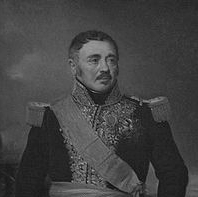General Pierre Barrois

Born: October 30, 1774
Place of Birth: Ligny-en-Barrois, Meuse, France
Died: October 19, 1860
Place of Death: Villiers-sur-Orge, France
Arc de Triomphe: BARROIS on the west pillar
Pronunciation:
Pierre Barrois first joined the French army in August of 1793 when he enlisted in the battalion of Scouts of the Meuse. A month later he was promoted to lieutenant, and then in October he commanded his battalion at the Battle of Wattignies . In 1794 Barrois' unit was reformed into the 9th Light as part of Marceau's division and he fought at Fleurus , the Roer, and Coblentz. In the following years, Barrois served in the second blockade of Mainz, was promoted to capitaine, and served at the crossing of the Rhine at Neuwied. Barrois was then sent to Brest to take part in the expedition to Ireland of 1798 and afterwards he was employed in the Vendée. After Napoleon took power as First Consul, Barrois was employed in the Army of the Reserve and distinguished himself at Marengo.
During the peace that followed, Barrois was promoted to chef de bataillon in October of 1800 and then received a promotion to colonel of the 96th Ligne in 1803. Sent to the camp of Montreuil that year, his unit formed part of Marchand's brigade in Dupont's division. In 1804 Barrois was one of the colonels who formed a military commission that was ordered to judge the Duke of Enghien.
When war broke out in 1805, Barrois continued to lead the 96th Ligne on the campaign that year and distinguished himself at Haslach in October. The following year he served against the Prussians, serving at Albeck, Halle, Nossentin, and Lübeck. As the campaign resumed in early 1807, Barrois fought at Mohrungen in January and then he was promoted to général de brigade in February. Still serving in Dupont's division, he served at Braunsberg later that month and then at Friedland in June.
In 1808 Barrois was given command of the 2nd Brigade of Ruffin's Division in I Corps of the Army of Spain. Serving in Spain that year, he distinguished himself at Espinosa in November and then served at Somosierra and Madrid. The next year Barrois fought at Uclès, Medellin , and Talavera and he was also created a Baron of the Empire. In 1810 he served at the siege of Cadiz, and in March of 1811 he fought at Chiclana where he assumed command of the division after General Ruffin was wounded and captured. Three months later Barrois was promoted to général de division, and then in October he marched on the camp of Saint-Roch. At the end of the year, he served at the Siege of Tarifa, and then in 1812 he continued to command a division in the Army of the South.
At the very end of 1812 Barrois was recalled to France. He was given command of a division of the Young Guard for the campaigns in Germany of 1813, and he distinguished himself at Bautzen in May. That August he fought at Reichenbach and Dresden, and then in October he fought at Leipzig and formed the rear guard until the army reached the Rhine. Barrois went on to serve at the combat of Eisenach and then in January he was sent with a division of the Young Guard to Belgium. In the meantime he was made a Count of the Empire and he fought at Courtrai before finally retiring after Napoleon's abdication.
When Napoleon returned from exile in 1815 for the Hundred Days, Barrois rallied to him and was given command of the 1st Division of the Young Guard. During the campaign that June, he commanded the Tirailleurs of the Young Guard at Ligny. A few days later he fought at the Battle of Waterloo where he was wounded by a ball to the left shoulder while defending Plancenoit. Barrois was placed on leave due to his wounds but not long thereafter he was put on non-activity.
Bibliography
Updated June 2016
© Nathan D. Jensen